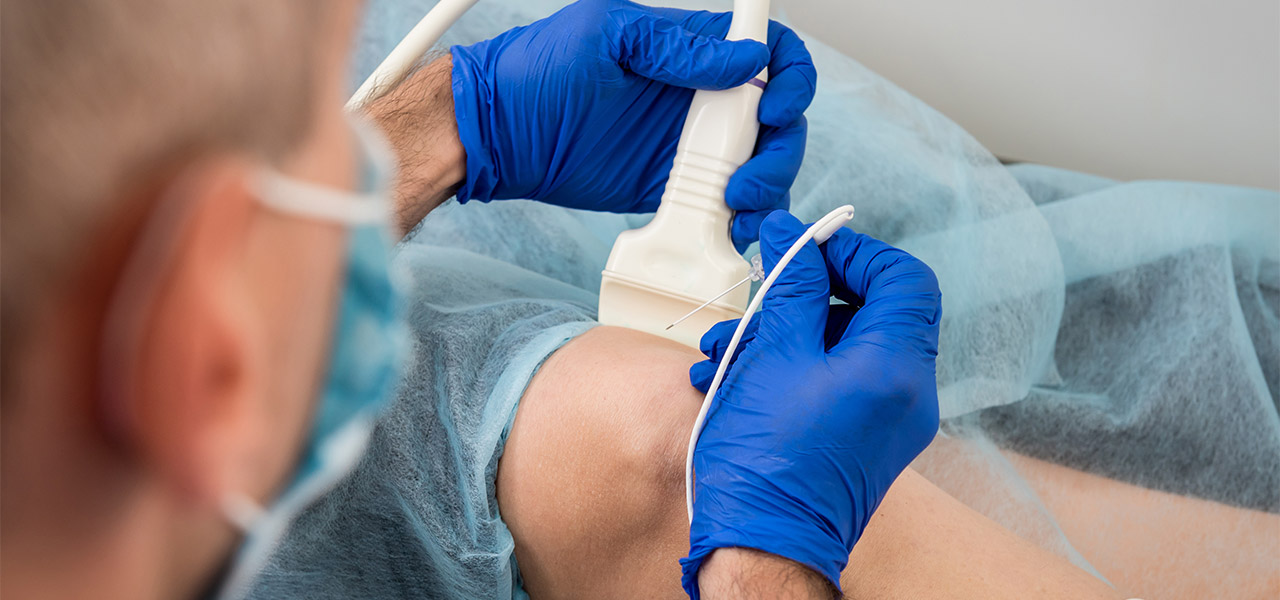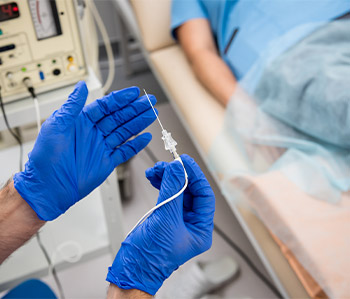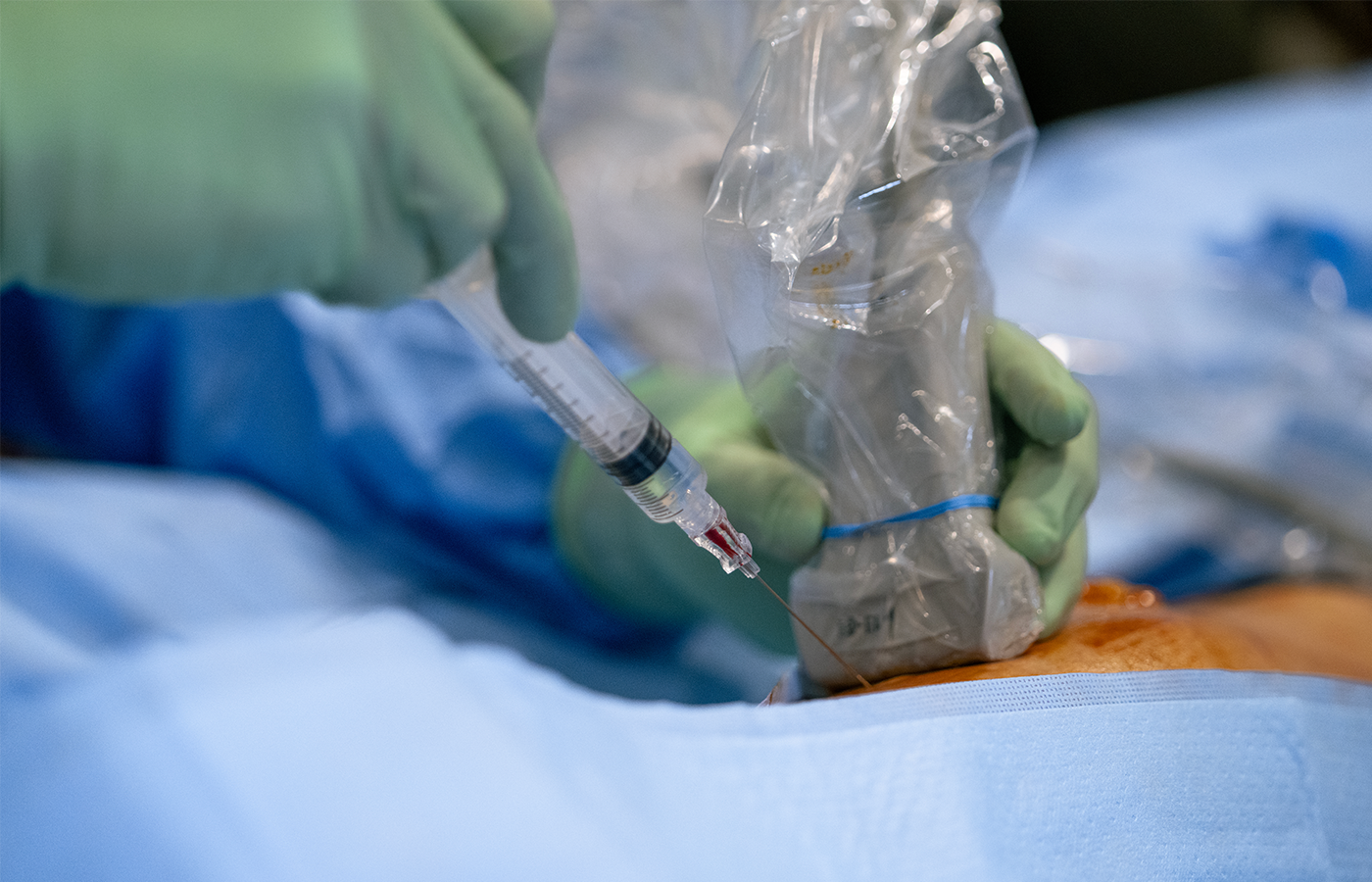
Radiofrequency Ablation
in Traverse City & Cadillac, MI
Radiofrequency Ablation (Endovenous Thermal Ablation) & Endovenous Laser Therapy
Both Radiofrequency ablation using the Closurefast catheter and Endovenous laser therapy uses thermal energy to help to close off incompetent or non-functioning veins. Both Radiofrequency ablation with Closurefast and Endovenous laser therapy are vein laser treatments used to treat varicose veins. Most insurances will cover both Radiofrequency ablation with Closurefast and Endovenous laser therapy for the treatment of varicose veins. During the procedure, heat causes the walls of the vein to contract and then close as the Radiofrequency ablation catheter or laser is withdrawn. The Endovenous laser therapy laser delivers constant heat energy and the amount of energy produced is controlled by the rate of laser pullback. On the other hand, Radiofrequency ablation with Closurefast provides constant temperature to treat the vein segmentally and no energy is delivered during pullback.
While both laser and Radiofrequency ablation are highly effective, there have been several studies published indicating that patients experience less pain and bruising after the procedure with the Radiofrequency ablation than they do with the laser. Dr. Heeringa has used both devices in the past but made the switch to using Radiofrequency ablation exclusively after seeing the difference in post-op pain in his patients.


Benefits Of Radiofrequency Ablation
- Relief of symptoms
- Less invasive; not a surgical procedure
- Same day, outpatient procedure
- Little to no scarring
Who Is A Good Candidate For Radiofrequency Ablation?
If you have varicose veins, you’re likely to be a great candidate for radiofrequency ablation to remove them. These minimally invasive treatments are very effective and don’t require any downtime.
It’s a good idea for patients considering this treatment to first have tried conservative treatments for varicose veins, such as wearing compression stockings, exercise (particularly involving your legs), weight loss, and elevating your legs while sitting.


MEET Dr. Brian Heeringa, Board Certified
Dr. Heeringa is a Board certified General Surgeon, a Fellow of the American College of Surgeons and a Diplomate of the American Board of Venous and Lymphatic Medicine. He and his team treat a broad spectrum of venous conditions ranging from spider veins to varicose veins to venous ulcers and everything in between. We also offer DVT risk assessment and can help manage post thrombotic syndrome. Call today to find out how our team can help you.
The Endovenous Radiofrequency Ablation Treatment
Endovenous Radio Frequency Ablation (Radiofrequency ablation), also called the ClosureFast procedure, is a minimally invasive varicose vein treatment procedure that uses radiofrequency energy (electricity) to heat, collapse, and seal off the targeted blood vessels. The Radiofrequency ablation procedure is preferred by Dr. Heeringa.
After using ultrasound to map the course of the vein to be treated, the physician guides a catheter (thin tube) through a small incision into the diseased vein, threading it through the blood vessel. Electricity is delivered to a heating element in 20-second pulses, heating and contracting the collagen within the walls of the vein until they shrink and shut down. This process is called ablation.
The vein is treated in segments as the catheter is gradually inched back down towards the incision. When the entire vein has been ablated, the blood flow is automatically rerouted through healthier adjacent veins, restoring healthy circulation and reducing swelling. The ablated vein becomes scar tissue and is absorbed by the body. Possible complications of endovenous radiofrequency ablation are thermal skin burns and temporary numbness.
Radiofrequency ablation is usually covered by most private insurers and Medicare when proof of medical necessity and previous conservative therapy is provided. Approved for use in the United States by the Food and Drug Administration in 1999, the Radiofrequency ablation treatment procedure is performed under local anesthesia in a physician’s office, ambulatory surgical center, or hospital. Patients are encouraged to walk immediately following the procedure and are usually able to resume their normal activities within a day.
Both Radiofrequency ablation and Endovenous Thermal Ablation procedures are an alternative to more invasive leg stripping surgery that requires hospitalization and general anesthesia. Radiofrequency ablation and Endovenous Thermal Ablation are used primarily to treat the great saphenous veins (GSV), small saphenous vein (SSV), and other superficial veins in the legs.
How Long Does Radiofrequency Ablation Treatment Take?
These treatments at our Traverse City and Cadillac offices only take from 45 minutes to an hour. There is maybe a half-hour to an hour of time before and after for preparation and short recovery.
Is Radiofrequency Ablation Safe?
These treatments with Dr. Heeringa are safe and effective. When you compare the comfort and lack of recovery necessary with radiofrequency ablation to the former method of vein stripping, there really isn’t any comparison. Radiofrequency energy uses lower temperatures than laser endovenous ablation, so patients are more comfortable. It’s a great treatment for varicose veins with success rates of over 95 percent for closing off and removing the vein.
What Are The Side Effects Of Radiofrequency Ablation?
Complications are quite rare, but there is a possibility of deep vein thrombosis; this can occur in any procedure where a catheter is placed into a vein. Nerve damage to sensory surface veins is possible, but these nerves usually return to normal in a few weeks to a couple of months.
Benefits Of Endovenous Laser Ablation (Vein Laser Treatment)
- Relief of symptoms
- Less invasive; not a surgical procedure
- Little downtime
- Same day, outpatient procedure
- Little to no scarring
Who Is A Good Candidate For Endovenous Laser Ablation?
As with radiofrequency ablation, just about anyone bothered by their varicose veins is a great candidate for endovenous laser ablation. Dr. Heeringa advises patients to exhaust conservative treatment options — wearing compression stockings, losing weight, exercise (particularly with your legs), and elevating your legs while sitting — before opting to have Endovenous Thermal Ablation.
The Endovenous Laser Ablation Treatment
Endovenous Laser Ablation uses laser energy, which is simply a highly concentrated beam of light. Medical lasers work by delivering this light energy to the targeted tissue with extreme precision, so as not to affect the surrounding tissue. Lasers have proven their safety and effectiveness through years of use in all types of medical procedures, from eye surgery to dermatology. In the hands of a skilled physician, lasers offer far less risk for complications than conventional surgery.
In Endovenous Thermal Ablation, a thin fiber is inserted into the damaged vein through a tiny entry point in the skin. Using ultrasound technology, a thin laser fiber is guided into the vein through a very small opening to deliver pulsed laser heat to the diseased vein wall. This causes the vein to close and seal shut and eliminates venous reflux at its source. The veins that are closed are superficial veins that handle less than five percent of the body’s blood flow. The blood is automatically routed to other, healthy veins.
Some physicians are now using a jacketed fiber, which prevents any contact between the fiber and the vein wall. The jacketed fiber prevents much of the pain and bruising that is often associated with the most conventional method of ligation and stripping. Some patients may experience temporary soreness or some slight swelling, which can be treated effectively with over-the-counter, non-aspirin pain relievers, and typically subsides within 1 to 2 days. Possible complications of endovenous laser treatment are thermal skin burns and transient numbness.
Both Radiofrequency ablation and Endovenous Thermal Ablation procedures are an alternative to more invasive leg stripping surgery that requires hospitalization and general anesthesia. Radiofrequency ablation and Endovenous Thermal Ablation are used primarily to treat the great saphenous veins (GSV), small saphenous vein (SSV), and other superficial veins in the legs. Varicose veins that branch off from these blood vessels are treated with Sclerotherapy or Ambulatory Phlebectomy.
Are The Results Of My Endovenous Laser Ablation Permanent?
The veins closed off by Dr. Heeringa with Endovenous Thermal Ablation are permanently closed. They won’t return to pumping blood, so they then cannot become varicose veins either. Most veins treated with laser ablation are effectively invisible, even to ultrasound, 12 months after the procedure. There isn’t any scarring with this procedure, and there is little, if any, discomfort. The treated vein will not return. Of course, you can still develop other varicose veins in the future.
What Are The Possible Side Effects Of Endovenous Laser Ablation?
As with any procedure where the skin is penetrated, there is a slight risk of injection, but this occurs in less than 1 in 1,000 cases. Since the catheter is inside the blood vessel, there is a risk of damage to the blood vessel, bruising or bleeding at the puncture site, and infection. The experience of Dr. Heeringa and our team at Northern Michigan Vein Specialists mitigates this risk.
Patients often have some post-procedure bruising and tenderness. Your compression stockings help to ease these effects.
Thrombophlebitis (swelling of the vein) is not uncommon, and this can cause pain and tenderness over the treated area. Most patients only need over-the-counter anti-inflammatory medication and ice to handle the pain.
There is an extremely low risk of a pulmonary embolism where a blood clot forms in the vein and can travel to the lungs.
